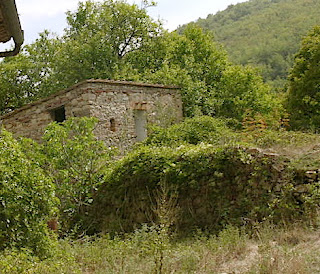Relief
Rain! At last, after two months of drought, we were regaled with a substantial rainfall this morning, complete with marvellous rumbles of thunder.
Everyone in the valley, probably in the whole of Tuscany, is relieved. The forecasts promise more and today after it cleared I pulled out my first weeds of the rainy season.
I have had my eye on them for weeks; but it is pointless weeding a dry garden.
The animals in the woods will be relieved too: maybe the predatory deer and marauding wild boar will be distracted by puddles and newly-succulent greenery...we live in hope!
















